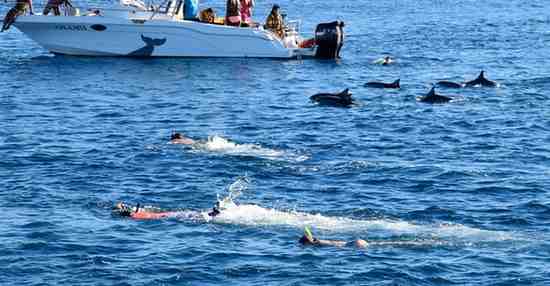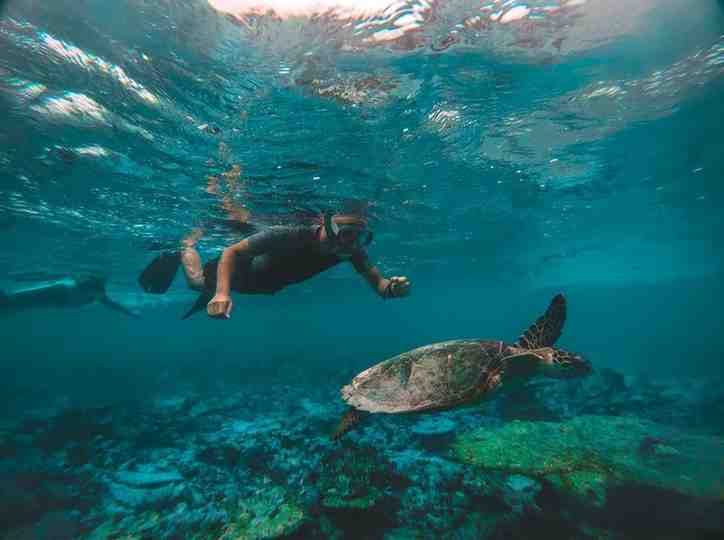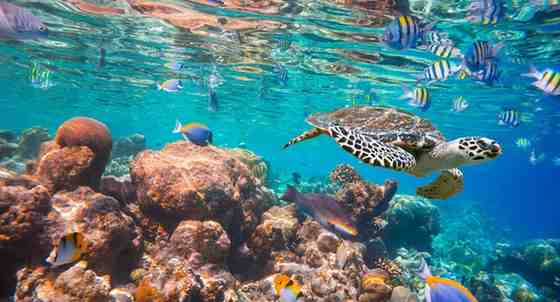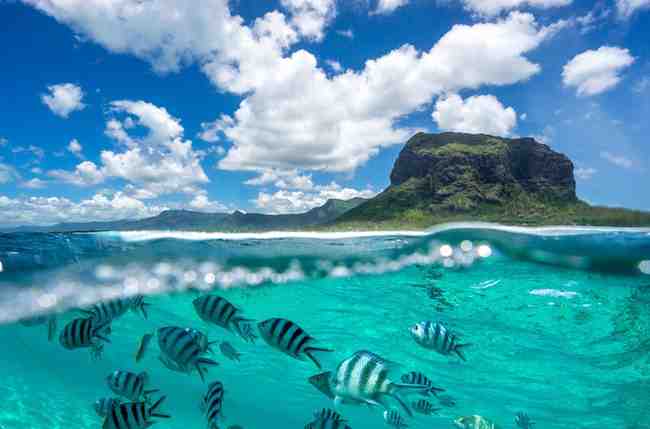
Why Dolphin Watching in Mauritius Tops Every Bucket List
Swimming with Dolphin Tour Mauritius in open water isn’t something most people get to cross off their list. But here along Mauritius’ western coastline? Spinner and bottlenose dolphins show up consistently. This isn’t like watching them perform tricks in tanks – you’re floating in turquoise water watching wild animals act naturally. The boat operators here don’t mess around when it comes to protecting these creatures. They follow proper guidelines, so tourists walk away with incredible memories without causing harm.
Best Time to Spot Dolphins Along the Coast
You’ll want to be on a boat somewhere between 6 and 9 in the morning. Early birds catch dolphins, literally. The pods hang near shore feeding before they swim deeper. Now, May till December generally brings calmer water and clearer views – your stomach will thank you for that smoother ride. Summer water feels warmer if swimming for hours sounds appealing. But here’s the thing – dolphins pop up year-round no matter when you arrive.
Top Locations for Dolphin Encounters
| Location | Dolphin Species | Success Rate | Best Months |
| Tamarin Bay | Spinner Dolphins | 95% | Year-round |
| Black River | Bottlenose Dolphins | 90% | May-December |
| Flic en Flac | Mixed Pods | 85% | June-November |
| Le Morne Peninsula | Spinner Dolphins | 92% | April-October |
West coast bays create perfect feeding zones dolphins visit daily. Tamarin Bay tops the list – tour captains almost always spot them during morning runs. That reputation didn’t build itself.
What Makes Spinner Dolphins So Special
Imagine watching a dolphin shoot three meters straight up, spinning like a top seven full times before crashing back down. Yeah, that’s daily life for these guys. They’re naturally curious too – boats fascinate them so they’ll cruise over for a closer look. You might see groups of 20 swimming together. Sometimes though? Over a hundred gather in what locals call super-pods. Absolutely wild to witness.
Choosing Between Group Tours and Private Charters
Group tours cram 15-25 folks onto one boat. Costs around 1,500 MUR per head. They stick to schedules, throw in basic snorkel gear and maybe some juice. Now private charters work differently – you pick when to leave, where to go, how long to stay. Crew focuses entirely on your bunch. Families and couples who value their space typically drop by 15,000 to 25,000 MUR depending on boat type and hours out.
Swimming vs Observing: Understanding the Options
Operators usually offer two choices here. Stay-dry packages keep you topside while dolphins cruise by underneath – perfect if you’ve got little ones or just don’t feel like getting wet. Swimming packages hook you up with everything: wetsuit, fins, mask. But understand this upfront – chasing dolphins? Not allowed. Touching them? Absolutely forbidden. You float there keeping distance, letting them decide whether to approach.

Safety Guidelines Every Participant Should Know
Everyone wears a life jacket in the water. Period. It doesn’t matter if you swim competitively in college. Crew walks through safety basics before leaving dock. Pregnant ladies past their first three months need doctor clearance because boats bounce around unpredictably. Having trouble moving around? Tell them immediately – they’ll help with boarding and navigating the deck. Plus, guides swim right alongside you the whole time, ready to assist if anything feels off.
What to Bring for Your Dolphin Adventure
Reef-safe sunscreen sits at the top – regular staff kills coral. Pack a waterproof camera, towel, maybe seasickness pills if boats make you queasy. Clothes that dry fast beat cotton shirts stay damp all day. GoPros grab amazing underwater shots you’ll show everyone back home. They hand out snorkel equipment though plenty of people bring their own for better fitness.
Understanding Responsible Dolphin Tourism
Good operators enforce hardcore rules. Zero feeding allowed. Zero touching. Don’t even think about swimming between mothers and calves. Boats stop 50 meters away initially, kill the engine, then drift in silently. There are time caps too – can’t exhaust animals by hanging around forever. That’s how these dolphins stay healthy while giving tourists legitimate once-in-a-lifetime encounters.
Combining Your Dolphin Tour with Other Activities
Many packages bundle dolphin watching with reef snorkeling or visits to crazy geological formations. Catamarans give you tons of deck space for tanning between animal sightings. Some operators include breakfast or grill lunch on isolated beaches, turning three-hour trips into full days. Crystal Rock makes stunning photo backdrops. Underwater scooters? Total rush if you want extra adrenaline beyond just dolphins.
For comprehensive tour options and packages, visit Mauritius Guided Tours to explore additional experiences that complement your dolphin adventure perfectly.
How Photography Tips Capture Perfect Moments
Set cameras to burst mode – massively improves catching dolphins’ mid-rotation. That golden early light creates gorgeous backlighting when they breach. Underwater photography takes real patience because dolphins swim over investigating your camera before disappearing. Here’s a tip from pros: zoom in on their eyes instead of shooting the whole body. Eyes convey emotion, intelligence, that connection you’re after in photos.
Weather Conditions and Cancellation Policies
Rough seas occasionally shut down tours prioritizing safety over money. Most outfits refund everything or let you reschedule penalty-free. June through August gets choppy from trade winds but dolphins stay active anyway. Operators check forecasts obsessively, usually calling you the night before if weather looks sketchy. Smart travelers book dolphin trips early in their vacation allowing wiggle room for weather delays. While mapping out your days, check various island attractions worth hitting between water activities.
Price Comparisons Across Different Operators
Bargain companies charge 1,500-2,500 MUR for no-frills three-hour basics. Mid-range outfits running 3,000-4,500 MUR deliver smaller crowds, decent gear, real food and drinks. Premium operators above 5,000 MUR bring luxury catamarans, onboard photographers, restaurant-quality meals. Booking straight through their websites cuts costs versus hotel concierge desks tacking on fat commissions.
Family-Friendly Considerations for All Ages
Five-year-olds can tag along for observation rides but swimming needs eight-year minimums at most places. Shallow encounters closer to shore work better for nervous kids than heading way out deep. Crews handling families daily know exactly how to balance excitement with comfort. Grandparents typically prefer stable catamarans over zippy speedboats that rattle your bones.
Marine Conservation Efforts Supporting Local Wildlife
Your ticket money flows directly into research tracking dolphin movements and population health. Scientists crunch data from responsible operators to map out protected zones and breeding grounds. Educational programs teach local fishermen sustainable methods cutting down accidental net catches and habitat damage. Picking eco-certified operators means your vacation cash supports real conservation instead of just exploiting wildlife for profit. Couples, after something romantic, should peek at special packages mixing wildlife with intimate private settings.

Physical Fitness Requirements and Limitations
Basic swimming ability covers it since life jackets handle buoyancy while guides stay close. Getting on boats means climbing ladders or steps – tricky for folks with bad knees or hips. Snorkeling requires breathing comfortably through a tube, though options exist if masks freak you out. Average fitness handles these trips fine. Just give heads-up beforehand if you need accommodation and crews prepare accordingly.
Peak Season Crowd Management Strategies
October through April pulls massive tourist crowds fighting over limited spots. Booking 2-3 weeks ahead locks your preferred dates and times during peak chaos. Weekdays run quieter than weekends when locals join the fun too. Those 6 AM sunrise departures? Only hardcore wildlife nerds wake up that early – translating to tiny groups and peaceful experiences.
Alternative Wildlife You Might Encounter
Sea turtles constantly pop up around reefs during snorkel portions. Flying fish do this insane thing skimming across water when boats speed up – like watching silver confetti fly. Pilot whales cruise through occasionally but don’t expect them. Reef fish – parrotfish, angelfish, clownfish – pack snorkel sites adding tons of color beyond just dolphins.
Scenic Spots Worth Visiting Between Tours
Land stuff complements ocean activities perfectly when planning multiple days here. That jaw-dropping coastal viewpoint serves up ridiculous panoramic shots perfect for golden hour photography. These places offer quiet downtime after adrenaline-filled dolphin mornings.
Exploring Nature Between Ocean Adventures
Plant geeks absolutely love wandering the national gardens checking out bizarre tropical species and massive lily pads. Gardens provide shaded relief when beach heat gets overwhelming. Paths wind through themed sections showing off plants you’d never encounter back home.
Getting Started with Your Booking
Ready to make this happen? Hit up our contact page where staff answer questions and build personalized itineraries. They’ll connect you with operators matching your budget, group size, and what kind of experience you’re chasing.
Frequently Asked Questions About Dolphin Tours
Q: Are dolphin sightings guaranteed on every tour?
Morning trips hit 90-95% success rates. But guaranteeing wild animals? Impossible. Solid operators let you reschedule free if dolphins ghost your trip.
Q: Can I touch or feed the dolphins during encounters?
Hard no. international regulations strictly ban physical contact and feeding. Protects animals and humans while keeping behaviors natural.
Q: How long do typical dolphin tours last?
Most trips run 3-4 hours from dock to dock. You’re with dolphins for maybe 30-60 minutes. Longer 5–6-hour tours add snorkeling or beach hangs.
Q: What happens if I get seasick during the boat ride?
Crews carry meds and can redirect to calmer spots if needed. Popping something 30 minutes before departure prevents most problems.
Q: Is swimming with dolphins safe for non-expert swimmers?
Totally, assuming you wear the life jacket and follow instructions. Dolphins aren’t aggressive. Shallow options exist if deep water freaks you out.
Q: Can pregnant women participate in dolphin tours?
First trimester women usually handle observation-only after doctor approval. Later than that? Skip it given bouncing boats and zero nearby hospitals.
Q: What’s the minimum age for children on dolphin tours?
Most take 5+ for staying aboard. Swimming needs 8+ typically. Private charters sometimes bend rules for younger kids with tight supervision.
Q: Do I need previous snorkeling experience?
Not even slightly. Guides teach basics before you enter water. Newbies get extra help and stick to shallower zones while learning.
Final Thoughts on Your Mauritius Dolphin Adventure
Floating in crystal water watching wild dolphins glide past – that’s genuinely unforgettable stuff. Western coast delivers consistent ethical encounters without harming marine life. Professional crews nail the balance between safety expertise and ecosystem respect, maximizing your water time while minimizing environmental footprint.

